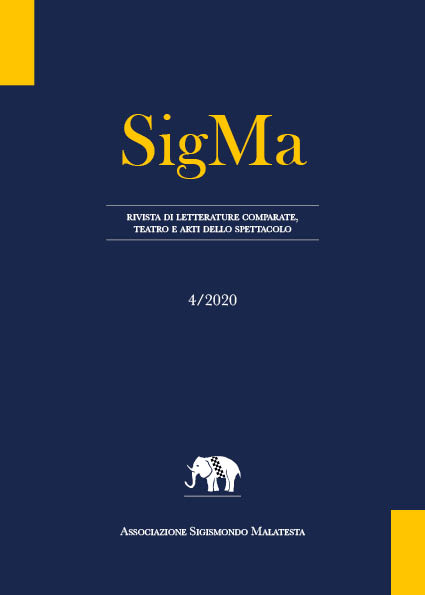Le origini e il senso dell’antiamericanismo russo nell’arte sovietica (1947-1956)
Abstract
Che forme ha assunto l’arte sovietica della Guerra Fredda? Per rispondere a questo interrogativo si propone uno studio culturale sulle pratiche di propaganda che tra il 1947 e la metà degli anni Cinquanta vedevano la collaborazione con le arti nella costruzione di un’immagine del nemico basata sulla sovrapposizione di una minaccia recente (nazismo) e stereotipi sull’America alimentati dai classici russo-sovietici (Majakovskij-Gor’kij). Sono stati analizzati testi eterogenei come film, poesie, manifesti.
Downloads
SigMa pubblica in internet, ad accesso aperto, con licenza:
|
|
CCPL Creative Commons Attribuzione |
L'autore conserva il copyright sul suo contributo, consentendo tuttavia a chiunque "di riprodurre, distribuire, comunicare al pubblico, esporre in pubblico, rappresentare, eseguire e recitare l'opera", purché siano correttamente citati l'autore e il titolo della rivista. L’autore, al momento della proposta di pubblicazione, è inoltre tenuto a dichiarare che il contenuto e l’organizzazione dell’opera è originale e non compromette in alcun modo i diritti di terzi, né gli obblighi connessi alla salvaguardia di diritti morali ed economici di altri autori o di altri aventi diritto, sia per testi, immagini, foto, tabelle, sia per altre parti di cui il contributo può essere composto. L’autore dichiara altresì di essere a conoscenza delle sanzioni previste dal codice penale e dalle leggi speciali per l’ipotesi di falsità in atti ed uso di atti falsi, e che pertanto Reti Medievali è esente da qualsiasi responsabilità di qualsivoglia natura, civile, amministrativa o penale, e sarà dall'autore tenuta indenne da qualsiasi richiesta o rivendicazione da parte di terzi.

